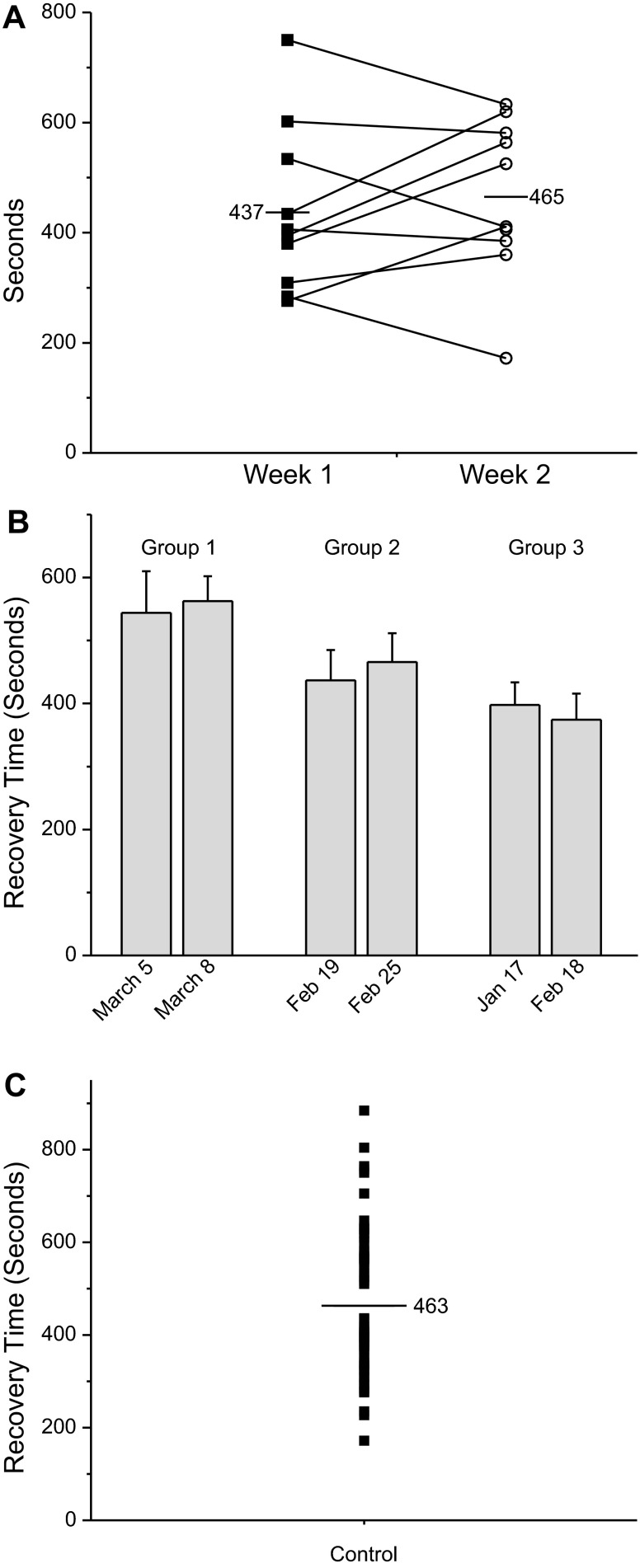Fig. 3.
Variability in recovery times from isoflurane anesthesia. Rats were exposed to isoflurane and then exposed to isoflurane again a week later. Animals, 420–510 g, were placed in an airtight anesthesia box and exposed to 3% isoflurane (in 3 l/min O2) for 8 min. The rats were then kept in the same chamber while isoflurane was reduced to 2% (2 l/min O2) for another 45 min. The animals were removed from the chamber and allowed to recover on a table top breathing room air. They were placed on their backs and the time to recover from isoflurane anesthesia was the time from terminating the 2% anesthetic exposure until the animals had all four paws on the table. A: recovery time from a single group of 10 rats exposed twice to isoflurane. The first exposure is plotted as ■ and the second exposure as (○). Lines connect the 2 exposures from the same rat. Although there was some variability in recovery times, even in the same animal, the average recovery time was remarkably constant. B: plot data obtained from 3 different groups of rats. Each group was exposed to isoflurane twice. Note that the average recovery time for each group stayed relatively constant between exposures. C: distribution of all recovery times for all 30 rats tested in this study.

